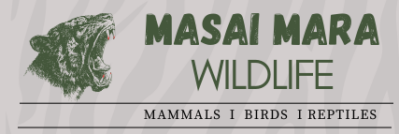- Common Names: Oribi
- Scientific Name: Ourebia ourebi
- Swahili Name: Taya
- Maasai Name: Enkaakumuo
- Size:
- Head-Body Length: 155 cm (61 inches)
- Shoulder Height: 60 cm (24 inches)
- Gestation: 28 weeks
- IUCN Status: Least Concern, although some populations face pressure from habitat loss and hunting in certain areas.
Recognition and Appearance
The Oribi is a small, slender antelope with a tan-colored coat and white underbelly. One of its key distinguishing features is the black spot located below the ears, known as the sub-auricular gland, which helps differentiate it from similar species like the Steinbuck. Males have narrow, spiky horns, while females lack horns. Both sexes exhibit large ears and characteristic white eye-rings that give them a distinctive appearance.
The Oribi’s bushy tail, tipped with black, is a unique feature often flagged upward when running away from predators, aiding identification. When threatened, the Oribi performs a form of escape known as stotting, where it springs into the air in quick bursts, similar to Reedbucks.
Habits and Behavior
Primarily active in the early morning and late afternoon, the Oribi tends to avoid the heat of the day by seeking shelter in long grass or shaded areas. It is mostly solitary or found in pairs, though you may occasionally spot small groups of females and juveniles grazing together.
The Oribi is highly territorial, and males often defend their small ranges from other males. These territories are marked with scent from glands beneath the ears. If threatened, the Oribi will let out a sharp, high-pitched whistle before bolting away in a zigzagging motion to evade predators.
Diet
Oribi primarily feed on short grasses but also graze in areas of longer grass, giving them a wider range of food sources compared to other antelope species. They are known to select the most nutritious grasses and may supplement their diet with herbs and shoots.
Where to Find
Though uncommon, Oribi are found in open savannas and grasslands. They favor areas where there is a mix of long grass for hiding and short grass for grazing, making them well-adapted to the varied landscapes of the Masai Mara. Their presence, while not abundant, can still be observed with a keen eye in the right habitats.
Reproduction and Calves
Like the Bush Duiker, female Oribi give birth in long grass, where they hide their young for up to two months. This concealment helps protect the calves from predators during their most vulnerable stage. After this period, the calves begin to move more independently but remain close to their mothers.
Conservation Status
Currently classified as Least Concern on the IUCN Red List, the Oribi enjoys a stable population across much of its range. However, in certain regions, habitat destruction due to agricultural expansion and poaching pose localized threats to its survival. Efforts in places like the Masai Mara, where wildlife conservation is prioritized, help to maintain healthy populations of this beautiful antelope.
Interesting Facts
- Name Origin: The name “Oribi” is believed to have originated from indigenous African languages, reflecting the animal’s elegant and delicate stature.
- Alert Signal: The Oribi’s sharp whistle is not just an alarm for its own family but also acts as a warning to other animals in the vicinity about the presence of predators.
Spotting an Oribi in the Masai Mara is a rewarding experience, as these shy and graceful creatures are always alert and quick to vanish into the grasslands. Keep an eye out during dawn or dusk, when they are most active!
